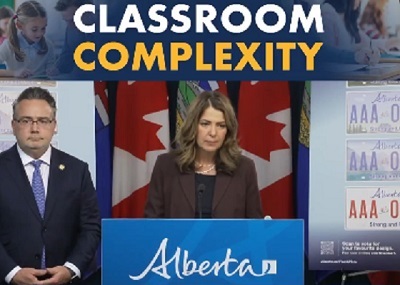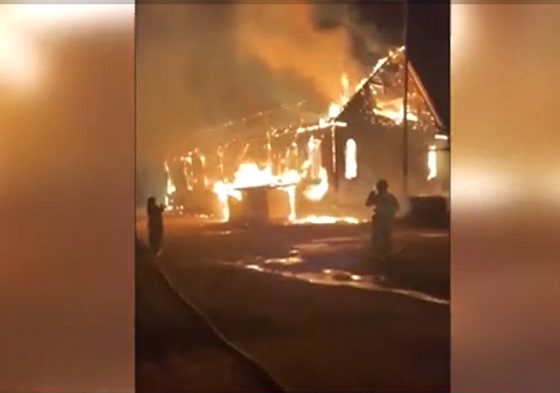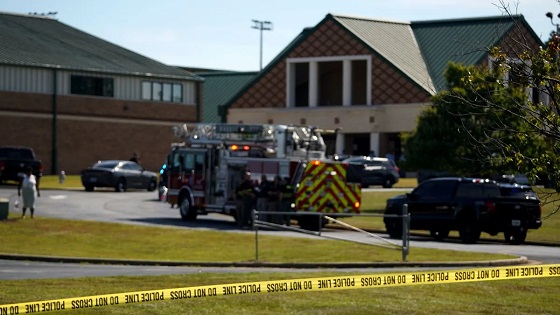Alberta
Grande Prairie woman arrested for selling guns on the criminal market

From the Alberta Law Enforcement Response Team
Grande Prairie Woman Arrested for Firearms Straw Purchasing
An ALERT investigation has resulted in the arrest of a Grande Prairie woman for firearms straw purchasing.
ALERT’s Grande Prairie organized crime and gang team alleges that Misty Kohuch lawfully acquired multiple handguns, which were then sold on the criminal market. The 37-year-old woman was arrested on October 1, 2019, with the help of Grande Prairie RCMP.
Kohuch purchased five handguns since July 2019, including one on the morning of the date of her arrest. ALERT had concerns the recently purchased handgun would be re-sold, and arrested Kohuch while she was still in possession of the firearm.
Kohuch was arrested via a traffic stop. Cocaine and fentanyl were also found in her vehicle.
“None of the other handguns have been accounted for, and who is in possession of those handguns should prompt concern from the community,” said Insp. Sean Boser, ALERT Regional teams.
Kohuch has been charged with:
- trafficking a firearm;
- possession of firearm for the purpose of trafficking;
- unauthorized possession of a firearm;
- careless storage of a firearm;
- unauthorized possession of a firearm in a motor vehicle;
- unauthorized possession of a firearm, knowing the possession is unauthorized;
- possession of drugs; and
- possession of drugs for the purpose of trafficking.
The investigation began in July 2019 after the RCMP’s National Weapons Enforcement Support Team (NWEST) provided information about suspicious firearms purchases.
Straw purchasing typically involves someone with a valid Possession and Acquisition License (PAL) but no criminal record obtaining firearms for someone who otherwise could not, or who does not want their name associated with the transaction.
Members of the public who suspect drug or gang activity in their community can call local police, or contact Crime Stoppers at 1-800-222-TIPS (8477). Crime Stoppers is always anonymous.
ALERT was established and is funded by the Alberta Government and is a compilation of the province’s most sophisticated law enforcement resources committed to tackling serious and organized crime.
Alberta
Alberta taxpayers should know how much their municipal governments spend

From the Fraser Institute
By Tegan Hill and Austin Thompson
Next week, voters across Alberta will go to the polls to elect their local governments. Of course, while the issues vary depending on the city, town or district, all municipal governments spend taxpayer money.
And according to a recent study, Grande Prairie County and Red Deer County were among Alberta’s highest-spending municipalities (on a per-person basis) in 2023 (the latest year of comparable data). Kara Westerlund, president of the Rural Municipalities of Alberta, said that’s no surprise—arguing that it’s expensive to serve a small number of residents spread over large areas.
That challenge is real. In rural areas, fewer people share the cost of roads, parks and emergency services. But high spending isn’t inevitable. Some rural municipalities managed to spend far less, demonstrating that local choices about what services to provide, and how to deliver them, matter.
Consider the contrast in spending levels among rural counties. In 2023, Grande Prairie County and Red Deer County spent $5,413 and $4,619 per person, respectively. Foothills County, by comparison, spent just $2,570 per person. All three counties have relatively low population densities (fewer than seven residents per square kilometre) yet their per-person spending varies widely. (In case you’re wondering, Calgary spent $3,144 and Edmonton spent $3,241.)
Some of that variation reflects differences in the cost of similar services. For example, all three counties provide fire protection but in 2023 this service cost $56.95 per person in Grande Prairie County, $38.51 in Red Deer County and $10.32 in Foothills County. Other spending differences reflect not just how much is spent, but whether a service is offered at all. For instance, in 2023 Grande Prairie County recorded $46,283 in daycare spending, while Red Deer County and Foothills County had none.
Put simply, population density alone simply doesn’t explain why some municipalities spend more than others. Much depends on the choices municipal governments make and how efficiently they deliver services.
Westerlund also dismissed comparisons showing that some counties spend more per person than nearby towns and cities, calling them “apples to oranges.” It’s true that rural municipalities and cities differ—but that doesn’t make comparisons meaningless. After all, whether apples are a good deal depends on the price of other fruit, and a savvy shopper might switch to oranges if they offer better value. In the same way, comparing municipal spending—across all types of communities—helps Albertans judge whether they get good value for their tax dollars.
Every municipality offers a different mix of services and those choices come with different price tags. Consider three nearby municipalities: in 2023, Rockyview County spent $3,419 per person, Calgary spent $3,144 and Airdrie spent $2,187. These differences reflect real trade-offs in the scope, quality and cost of local services. Albertans should decide for themselves which mix of local services best suits their needs—but they can’t do that without clear data on what those services actually cost.
A big municipal tax bill isn’t an inevitable consequence of rural living. How much gets spent in each Alberta municipality depends greatly on the choices made by the mayors, reeves and councillors Albertans will elect next week. And for Albertans to determine whether or not they get good value for their local tax dollars, they must know how much their municipality is spending.
Alberta
Premier Smith addresses the most important issue facing Alberta teachers: Classroom Complexity

Premier Danielle Smith is posting this response to a media question about Classroom Complexity.
While Albertans are hearing a lot about capping class sizes, Premier Smith says it might be a much better idea to talk about capping “complexity”.
The challenges teachers face in today’s classrooms are recognized, and work continues toward practical solutions that address their concerns.
Achieving a fair and reasonable agreement that best supports students remains a top priority. pic.twitter.com/o4UCt7sDoU
— Danielle Smith (@ABDanielleSmith) October 16, 2025
-

 National1 day ago
National1 day agoDemocracy Watch Renews Push for Independent Prosecutor in SNC-Lavalin Case
-

 Business2 days ago
Business2 days agoOver two thirds of Canadians say Ottawa should reduce size of federal bureaucracy
-

 Indigenous24 hours ago
Indigenous24 hours agoConstitutional lawyer calls for ‘false’ claims to end in Canadian residential schools burials
-

 Alberta15 hours ago
Alberta15 hours agoPremier Smith addresses the most important issue facing Alberta teachers: Classroom Complexity
-

 Alberta15 hours ago
Alberta15 hours agoAlberta taxpayers should know how much their municipal governments spend
-

 International1 day ago
International1 day agoItaly set to outlaw Islamic face coverings nationwide
-

 illegal immigration1 day ago
illegal immigration1 day agoLos Angeles declares a state of emergency over ICE deportations
-

 Business24 hours ago
Business24 hours ago‘Taxation Without Representation’: Trump Admin Battles UN Over Global Carbon Tax








